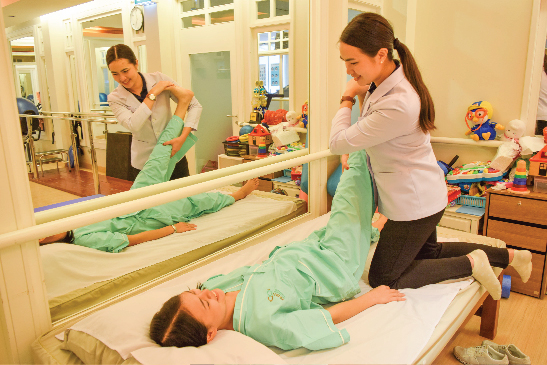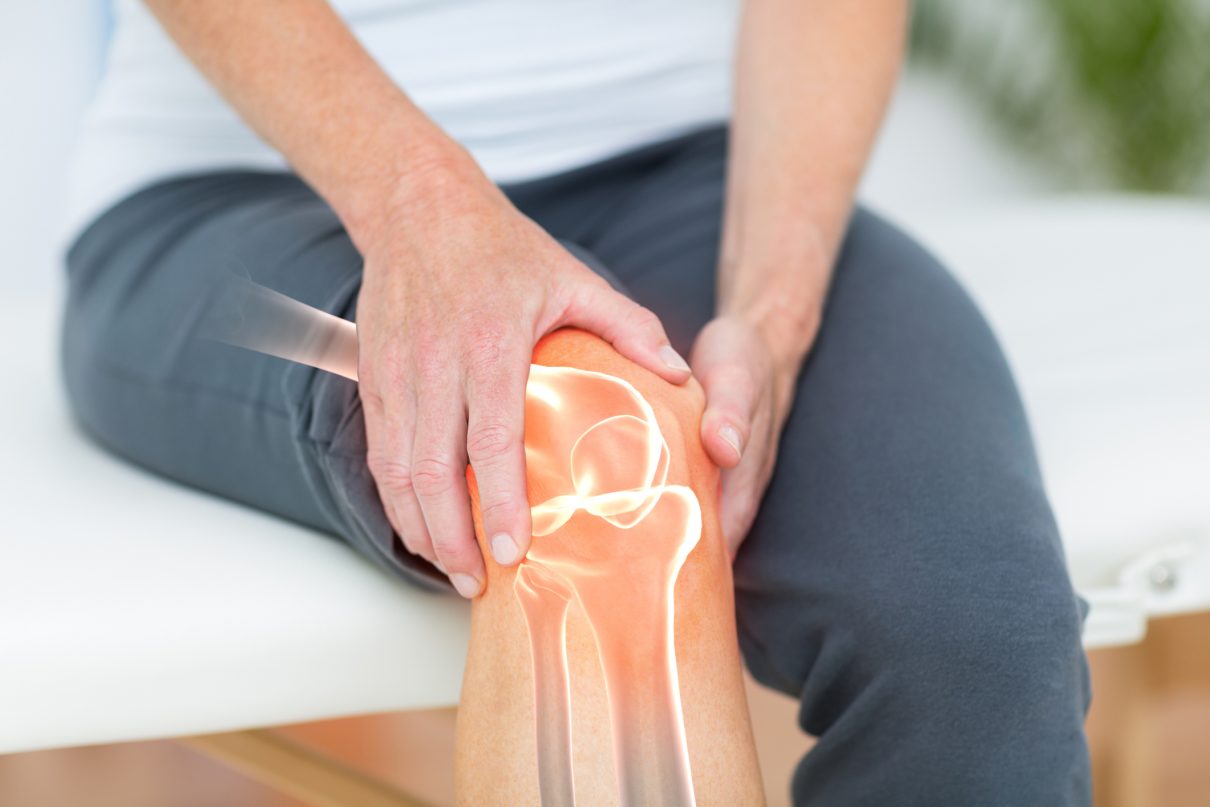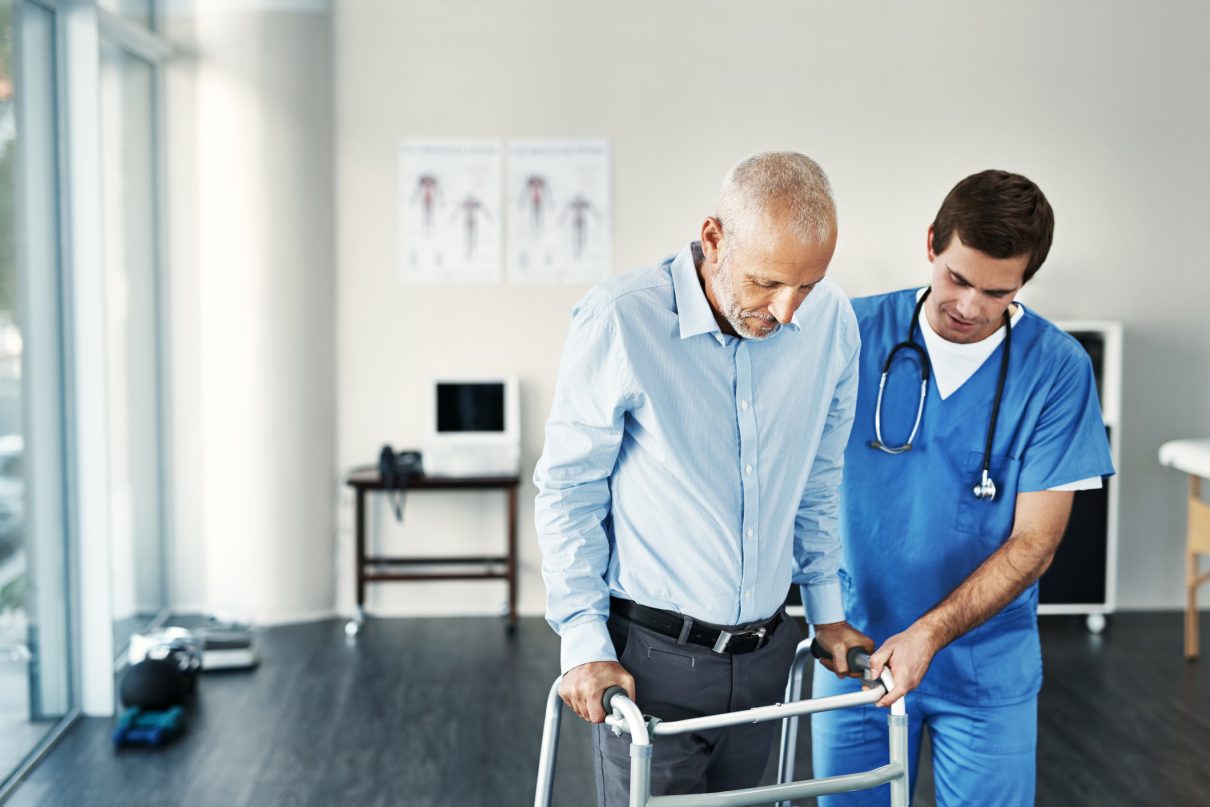Muscular Dystrophy
Introduction: Muscular dystrophy is a group of diseases that cause progressive weakness and loss of muscle mass. In muscular dystrophy, abnormal genes (mutations) interfere with the production of proteins needed to form healthy muscle.
There are many different kinds of muscular dystrophy. Symptoms of the most common variety begin in childhood, mostly in boys. Other types don’t surface until adulthood.
There’s no cure for muscular dystrophy. But medications and therapy can help manage symptoms and slow the course of the disease.
Causes
Muscular dystrophy is caused by mutations on the X chromosome. Each version of muscular dystrophy is due to a different set of mutations, but all prevent the body from producing dystrophin. Dystrophin is a protein essential for building and repairing muscles.
Duchenne muscular dystrophy is caused by specific mutations in the gene that encodes the cytoskeletal protein dystrophin. Dystrophin makes up just 0.002 percent of the total proteins in striated muscle, but it is an essential molecule for the general functioning of muscles.
Dystrophin is part of an incredibly complex group of proteins that allow muscles to work correctly. The protein helps anchor various components within muscle cells together and links them all to the sarcolemma – the outer membrane.
If dystrophin is absent or deformed, this process does not work correctly, and disruptions occur in the outer membrane. This weakens the muscles and can also actively damage the muscle cells themselves.
In Duchenne muscular dystrophy, dystrophin is almost totally absent; the less dystrophin that is produced, the worse the symptoms and etiology of the disease. In Becker muscular dystrophy, there is a reduction in the amount or size of the dystrophin protein.
The gene coding for dystrophin is the largest known gene in humans. More than 1,000 mutations in this gene have been identified in Duchenne and Becker muscular dystrophy
Sign and Symptom: The main sign of muscular dystrophy is progressive muscle weakness. Specific signs and symptoms begin at different ages and in different muscle groups, depending on the type of muscular dystrophy.
Duchenne type muscular dystrophy
This is the most common form of muscular dystrophy. Although girls can be carriers and mildly affected, it’s much more common in boys.
About one-third of boys with Duchenne muscular dystrophy (DMD) don’t have a family history of the disease, possibly because the gene involved may be subject to sudden abnormal change (spontaneous mutation).
Signs and symptoms typically appear in early childhood and may include:
- Frequent falls
- Difficulty rising from a lying or sitting up position
- Trouble running and jumping
- Waddling gait
- Large calf muscles
- Walking on the toes
- Muscle pain and stiffness
- Learning disabilities
Becker muscular dystrophy
Signs and symptoms are similar to those of Duchenne muscular dystrophy, but tend to be milder and progress more slowly. Symptoms generally begin in the teens but may not occur until the mid-20s or even later.
Other types of muscular dystrophy
Some types of muscular dystrophy are defined by a specific feature or by where in the body symptoms first begin. Examples include:
Facioscapulohumeral (FSHD). Muscle weakness typically begins in the face and shoulders. The shoulder blades might stick out like wings when a person with FSHD raises his or her arms. Onset usually occurs in the teenage years but may begin in childhood or as late as age 40
- Also known as Steinert’s disease, this form is characterized by an inability to relax muscles at will following contractions. Myotonic muscular dystrophy is the most common form of adult-onset muscular dystrophy. Facial and neck muscles are usually the first to be affected.
- Limb-girdle. Hip and shoulder muscles are usually the first affected. People with this type of muscular dystrophy may have difficulty lifting the front part of the foot and as a result may trip frequently. Onset usually begins in childhood or the teenage years..
- This type affects boys and girls and is apparent at birth or before age 2. Some forms progress slowly and cause only mild disability, while others progress rapidly and cause severe impairment.
Complications
The complications of progressive muscle weakness include:
- Trouble walking. Some people with muscular dystrophy eventually need to use a wheelchair.
- Shortening of muscles or tendons around joints (contractures). Contractures can further limit mobility.
- Breathing problems. Progressive weakness can affect the muscles associated with breathing. People with muscular dystrophy may eventually need to use a breathing assistance device (ventilator), initially at night but possibly also during the day.
- Curved spine (scoliosis). Weakened muscles may be unable to hold the spine straight.
- Heart problems. Muscular dystrophy can reduce the efficiency of the heart muscle.
- Swallowing problems. If the muscles involved with swallowing are affected, nutritional problems and aspiration pneumonia may develop. Feeding tubes may be an option.
Diagnosis: There are a variety of techniques used to definitively diagnose muscular dystrophy:
The genetic mutations involved in muscular dystrophy are well known and can be used to make a diagnosis.
- Enzyme assay: Damaged muscles produce creatine kinase (CK). Elevated levels of CK in the absence of other types of muscle damage could suggest muscular dystrophy.
- Genetic testing: As genetic mutations are known to occur in muscular dystrophy, these changes can be screened for.
- Heart monitoring: Electrocardiography and echocardiograms can detect changes in the musculature of the heart. This is especially useful for the diagnosis of myotonic muscular dystrophy.
- Lung monitoring: Checking lung function can give additional evidence.
- An electrode needle is inserted into the muscle to be tested. Electrical activity is measured as you relax and as you gently tighten the muscle. Changes in the pattern of electrical activity can confirm a muscle disease.
- Genetic testing. Blood samples can be examined for mutations in some of the genes that cause different types of muscular dystrophy.
- Muscle biopsy. A small piece of muscle can be removed through an incision or with a hollow needle. Analysis (biopsy) of the tissue sample can distinguish muscular dystrophies from other muscle diseases.
Treatment:
Drugs
The two most commonly prescribed drugs for muscular dystrophy are:
- Corticosteroids: This type of medication can help increase muscle strength and slow progression, but long-term use can weaken bones and increase weight gain.
Heart medications: If the condition impacts the heart, beta blockers and angiotensin-converting enzyme (ACE) inhibitors may help
Therapy
Several types of therapy and assistive devices can improve the quality and sometimes the length of life in people who have muscular dystrophy. Examples include:
- Range-of-motion and stretching exercises. Muscular dystrophy can restrict the flexibility and mobility of joints. Limbs often draw inward and become fixed in that position. Range-of-motion exercises can help to keep joints as flexible as possible.
- Low-impact aerobic exercise, such as walking and swimming, can help maintain strength, mobility and general health. Some types of strengthening exercises also might be helpful. But it’s important to talk to your doctor first because some types of exercise might be harmful.
- Braces can help keep muscles and tendons stretched and flexible, slowing the progression of contractures. Braces can also aid mobility and function by providing support for weakened muscles.
- Mobility aids. Canes, walkers and wheelchairs can help maintain mobility and independence.
- Breathing assistance. As respiratory muscles weaken, a sleep apnea device may help improve oxygen delivery during the night. Some people with severe muscular dystrophy may need to use a machine that forces air in and out of their lungs (ventilator).
What Makes our Stem Cell Treatment for Muscular Dystrophy Effective?
Since 2005, we have been developing comprehensive protocols regarding stem cell treatment for muscular dystrophy to overcome the limitations of conventional therapies. In our protocols, stem cells are combined with specialized therapies for muscular dystrophy that not only focus on helping the patient to cope with their symptoms, but also treat the direct cause of the symptoms by promoting the healing of the affected muscles. We believe that our comprehensive stem cell treatment for muscular dystrophy gives our patients the best chances of improvements, allowing for a better quality of life. Different types of muscular dystrophy can be considered for treatment, such as Duchenne, Becker, Limb Girdle, Fascio-Scapulo Humeral and more.
What potential improvements after therapy?
The purpose of stem cell treatment for muscular dystrophy is to promote the healing and growth of the affected muscles. Thus, various kinds of improvement are possible after our treatment and our past patients have experienced the following*:
- Enlarged muscle mass
- Improved range of movement
- Increased muscle strength
- Decreased tremor occurrence
- Improved balance
- Decreased stiffness
- Improved development (in children)
- Published in Neurological Rehabilitation Center, Services
Motor Neuron Diseases
MOTOR NEURON DISEASES (MNDs)
What is Motor Neuron Disease?
MNDs are a group of rare neurological disorders that progressively damage parts of the nervous system particularly the motor neurons. Motor Neurons are cells that control vital muscle activity responsible for gripping, speaking, walking, breathing and swallowing. This leads to general muscle weakness and is visible with wasting. A disruption in the signals between motor neurons and the muscles causes the dysfunction or loss of voluntary movement.
MNDs may affect children or adults. The causes of MNDs are not clearly known. It may be inherited, or effects of environmental, toxic, viral or a collection of many factors.
Signs and Symptoms:
There are numerous signs and symptoms and usually depend on the type of MND. Early signs and symptoms include:
- weakness in ankles or legs such as easily tripping or sudden difficulty to climb stairs
- slurred speech which gradually develop into difficulty swallowing some food
- weak hand grip manifested in dropping things or difficulty opening jars or buttoning clothes
- Weakness in shoulders that cause difficulty in lifting objects
- Unexplained muscle cramps and twitches
- weight loss or thinning of muscles on arms and legs
- breathing difficulty and shortness of breath not related to common respiratory disorders
Types of Motor Neuron Diseases
- ALS or Lou Gehrig’s disease – the most common type, affecting neurons in the brain and spinal cord. Effects are manifested on the muscles of the arms, legs, mouth, and respiratory system. A person with ALS may live another 3–5 years on avergae, but with proper supportive care, some have more than 10 years.
- Primary lateral sclerosis – rare form of MND that affects the neurons in the brain and progresses slower than ALS. It can still affect a person’s quality of life but is not fatal.
- Progressive bulbar palsy (PBP) – involves the brain stem. The condition causes frequent choking spells, difficulty speaking, eating, and swallowing.
- Progressive muscular atrophy (PMA) – a rare condition that affects the lower motor neurons in the spinal cord and causes slow but progressive muscle wasting, especially in the arms, legs, and mouth.
- Spinal muscular atrophy (SMA) – is an inherited MND that afflicts children caused by a genetic change known as SMA1. It usually affects the trunk, legs, and arms.
Role of Functional Medicine in MND
Functional Medicine for MND is multi-level assessment which usually starts with testing metabolic status, evaluating imbalances at the cellular level, genetic testing, identifying risk factors of the patient’s susceptibility to this disease and to help find out why the disease has occurred in the first place. By understanding each of the imbalances identified the specialist is able to formulate and educate the patient about the most appropriate and beneficial diet and lifestyle modification. Another purpose is to promote the healing of the brain injury which can manifest in improved motor functions, balance, better coordination, decreased fatigue, increase in muscle tone and strength, and other improvements of symptoms through intensive physiotherapy, Robotics training, possible stem cell treatment and FMT.
- Published in Neurological Rehabilitation Center, Services
Chronic pain
What is Chronic Pain?
Chronic pain is a pain that lasts longer than the normal cause of healing, recurring and sometimes persistent all day long but may differ in severity. Even if the injury or illness has been resolved or healed, or managed with pain medications, chronic pain can still be felt from months to years. It affects a person’s quality of life and disrupts activities of daily living. For long term conditions, people with chronic pain develop low self-esteem, angry, depressed, anxious, and frustrated.
What are causes of Chronic Pain?
There are numerous causes of chronic pain but the main types are grouped as the following:
- Neuropathic (nerve-related) pain– caused by damaged or malfunctioning sensory receptors and neurons in the nervous system. One example is sciatica (pain in the back, hip, and upper thigh related to the sciatic nerve).
- Muscle pain– this pain comes from problems with the skeletal muscles. It can affect areas such as the lower back, hips, legs and feet, neck, shoulders, arms, and trunk of the body. It often occurs after an injury or following repetitive motions.
- Inflammatory pain – causes include arthritis, tissue injury, infection or post-surgical complications.
- Mechanical/compressive pain: causes include fractures, disc degeneration, or compression of tissue by tumors, cysts, or bony structures.
Role of Functional Medicine
Functional Medicine focuses on finding the underlying factors that play a role in the patient’s chronic pain. Individualized treatment/therapeutic plans are created after a comprehensive evaluation of the patient’s clinical imbalances, diet, lifestyle, psychological well-being, and results of Functional Lab tests. After identifying the underlying cause of one’s chronic pain, our specialists can advise an integration of programs that can help the patient achieve relief from symptoms. Nutritional status, proper supplementation, appropriate physiotherapy may be combined with shockwave therapy, G-Factor and other related management that directly addresses the underlying causes.
- Published in Orthopedic Rehabilitation Center, Services
ARTHRITIS
What is Arthritis?
Arthritis is a very common problem of inflammation of the joints. It affects both children and adults but is more common as people get older. There are many causes of arthritis such as injury, abnormal metabolism, genetic makeup, infections, and immune system dysfunction. There are about 100 different types with many related conditions. Osteoarthritis being the most common type. Arthritis occurs when the cartilage (cushioning connective tissue) in our joints become thin and wear away, bone rubs against bone which then causes the symptoms.
Signs and Symptoms
Symptoms include swelling, pain, stiffness and decreased range of motion. Symptoms may come and go and can be mild, moderate or severe. The symptoms could stay the same for years, but may progress or get worse over time. Severe arthritis can result in chronic pain, inability to do daily activities and make it difficult to move around. It may greatly affect one’s quality of life. Conventional treatment and management involves medications, physical therapies, patient education and support, surgeries, and many alternative treatments with an assortment of claims.
Role of Functional Medicine in Arthritis
A functional approach recognizes that the immune system is in charge of both inflammation and anti-inflammation processes. Functional medicine exposes the root cause of the confused immune system and when we treat this, the body can realign the natural immune response. The body has the ability to heal itself and it all starts with an initial examination, comprehensive neurologic and metabolic exam with necessary tests.
Functional medicine treatment plan promotes healing and improvement of cell functions through personalized nutrition plan, certain physiotherapy activities applicable to the patient’s specific condition and promising new treatments such as G-Factor and NAD.
Make an appointment
Please click here to make an appointment with our doctor.
- Published in Orthopedic Rehabilitation Center, Services
Amyotrophic Lateral Sclerosis (ALS)
What is ALS?
Also known as Lou Gehrig’s disease, ALS is a very aggressive and progressive degenerative neurologic disease affecting the nerve cells of the brain and the spinal cord. Normally, our motor neurons reach from the brain to the spinal cord and from the spinal cord to the muscles throughout the body. With ALS, these motor neurons degenerate and die which cause the loss of muscle control which eventually results in paralysis and losing the ability to speak, eat and breathe subsequently. In cases with rapid progression, it can be fatal within a year from the onset while milder progression may allow survival for many years.
What are the common signs and symptoms of ALS?
- Progressive weakness in any body part
- Loss of muscle mass and tissue
- Spasticity or continuous contraction of muscles
- Dysarthria or difficulty in speaking
- Dysphagia or difficulty in swallowing
- Frequent muscle cramps
- Random twitching
- Trouble with the respiratory system and breathing normally
Other facts about ALS:
- Cause is unknown. About 90 percent of ALS cases occur without family history
- It takes about one year before a final ALS diagnosis is made
- ALS is difficult to diagnose as there is no single test or screening to establish the diagnosis. Diagnosis requires a thorough clinical examination and series of diagnostic tests while ruling out other diseases that look like ALS
- It is not contagious
- The disease can affect anyone throughout the world regardless of race, ethnic or socioeconomic backgrounds.
- The initial symptoms of ALS can vary in different people and with a slow onset
Role of Functional Medicine in ALS
Functional Medicine aims in determining imbalances in metabolic functions through Functional Lab tests as these are mostly overlooked in the treatment of the disease. Lab results help in determining underlying factors that cause the patient’s symptoms. A personalized patient care plan can then be established with in-house adjunctive therapies and nutritional modification directed at the specific needs of the patient. ALS conditions may greatly benefit with antioxidant therapy, stem cell therapy, and DFPP (Double Filtration Plasmapheresis) among many others.
For more information or free online consultation, please send us inquiry.
- Published in Neurological Rehabilitation Center, Services
Spinal Muscular Atrophy
What is Autologous Stromal Vascular Fraction (SVF) Harvesting?
Autologous Stromal Vascular Fraction (SVF) Harvesting is a procedure in which adipose (fat) tissues are removed from the body usually from the belly or back area via liposuctioning. This can be done under local anesthesia as an out-patient procedure. The removed fat tissues then get separated into several components by a specialized container under close system, processed by enzyme, centrifuged and incubated. One of the most important component we get as a result of the separation process is a collection of cells we refer to as stromal vascular fraction (SVF). SVF is a collective term generally referring to mixture of endothelial and mesenchymal stem cells and various type of immune cells such as T cells, B cells, mast cells and macrophages. (Miltenyi Biotec, 2014)
The newly harvested SVF can be used in many ways depending on the need of the patient. Most commonly, it will be used to infuse back, together with platelet rich plasma (PRP), for rejuvenating purpose. Apart from this, it can be injected into knee joints to promote repairing and regeneration of knee cartilage. (Pham, Tian, Bui, et al, 2013) (Radin & Burr, 1984)
SVF can also be used to culture and grow more number of mesenchymal stem cell (MSCs) in a specialized laboratory. MSCs has extensive application in many type of chronic conditions, ranging from neurodegenerative disorders, such as Parkinson Disease, Alzheimer’s Disease, Multiple sclerosis to stable neurologic conditions , such as brain injury, spinal cord injury, cerebral palsy etc. (Gierdano, Galderisi & Marino, 2007) (Mesples, Majeed, Yun, et al, 2013)
What is the advantage of Autologous Stromal Vascular Fraction (SVF) Harvesting?
The Autologous Stromal Vascular Fraction (SVF) Harvesting procedure can be performed as an out-patient procedure, under local anesthesia and only takes few hours to complete. The procedure is minimally invasive thus require very little recovery time for the patients. And because the cells are “extracted” from the patient himself/ herself there are no compatibility issue involve.
Why mesenchymal stem cells (MSCs)?
There are several types of stem cell in the body but MSCs has the most capacity for multilineage differentiation, meaning they can adapt and change to the type of cells that patient’s body need. According to many prominent research institutions MSCs also showed the most promising result when it came to wound healing and tissue regeneration. Numerous studies were done on the potential healing ability of MSCs on different type of chronic conditions. (Wu, Chen, Scott, et al, 2007)
Why do we use choose to harvest from adipose tissue and not bone marrow or blood?
Whether your adult mesenchymal stem cells come from bone marrow, blood or fat probably does not make a much difference in terms of clinical use and its result. Although some centers claim that bone marrow or blood derived cells are superior to fat derived cells, there is no study evidence existed to prove such claim. (Harvesting MSCs from bone marrow require an invasive, painful, and time consuming procedure, while the number of cells yield is not comparable to fat origin. This also occur with getting the MSCs from blood, which require injection of marrow activating factors while the cell yielding is low. The situation may not be in the best clinical and financial interest of both the clinician and the patient. (Cell Surgical Networks, 2015)
What can we do with your harvested SVF cells?
Here at BBH Hospital we offer two options for the newly harvested SVF usages. First option after the harvesting we can infuse SVF with your PRP (both are obtained from the same procedure the procedure) and then re-inject it back to a desired area, intravenous, intradermal, or intra-articular, as agreed per prior discussion during the initial consultation. The second option is to send SVF off to a specialized laboratory where MSCs progenitor cells get separated and cultured to make more MSCs for future use. The newly made MSCs can also be stored in a special cells bank where cells are kept in stage of stasis extending their lifespan by significant amount of time. Having your cell stored in a cell bank mean that we no longer need to harvest your SVF again to get MSCs. The bank can fetch your cells sample to and re-culture the cell to get new MSCs as much as you needed for as long as you needed.
Why choose BBH Hospital?
At BBH Hospital we use a special designed close system to harvest the adipose tissues. This mean in addition to the standard sterile technique which we practice, there is an extra safety net to guard against any possible infections. Here at BBH Hospital the patient’s safety is always our first priority. Another advantage for choosing us is that our harvesting system require shorter amount of time comparing to many other systems – meaning more fresh harvested SVF and MSCs will be available for the patient. Also all of our physicians are registered, board certified, internationally trained, and very experienced in their specialty area. Our team at BBH Hospital will make sure that you will have a good experience and great result.
Here are the outline of what BBH-ASVF package includes
- One hour consultation with physician to discuss treatment, history, medication, goals, and expectation outcomes.
- Adipose cell harvesting procedure
- Stromal vascular fraction (SVF) isolation
- Platelet-riche plasma (PRP) procedure
- Reinfusion procedure, either intravenous, intradermal or intra-articular
- Nursing care during the stay
- Medication required for the procedures
- Surgical suite and equipment usage
- Constant monitoring during the procedure and while in recovery
Optional package
- SVF banking and MSCs culture
References:
Radin, E.L.& Burr, D. B. (1984). Hypothesis: joints can heal. Electronically retrieved from: http://www.ncbi.nlm.nih.gov/pubmed/6729484
Pham, P. V., Bui, K., Ngo, D.Q., et al. (2013). Transplantation of Nonexpanded Adipose Stromal Vascular Fraction and Platelet-Rich Plasma for Articular Cartilage Injury Treatment in Mice Model. Journal of Medical Engineering. Volume 2013 (2013), Article ID 832396, 7 pages
Wu, Y., Chen, L., Scott, P. G., et al. (2007). Mesenchymal Stem Cells Enhance Wound Healing Through Differentiation and Angiogenesis. Stem Cells Journal. Volume 25, Issue 10, pages 2648–2659, October 2007.
Gierdano, A., Galderisi, U. & Marino,I. (2007). From the laboratory bench to the patient’s bedside: An update on clinical trials with mesenchymal stem cells. Journal of Cellular Physiology. Volume 211, Issue 1, pages 27–35, April 2007
Cell Surgical Network. (2015). Why does use liposuction fat rather than bone marrow as a source of stem cells? Electronically retrieved from: http://www.stemcellrevolution.com/about-us/faqs/#11
Miltenyi Biotec. (2014).Preparation of the stromal vascular fraction (SVF) from human lipo-aspirate. Electronically retrieved from: https://www.miltenyibiotec.com/~/media/Files/Navigation/Research/Stem%20Cell/SP_MSC_lipoaspirate_protocol.ashx
Mesples, A., Majeed, N., Yun, Z., et al. (2013). Early immunotherapy using autologous adult stem cells reversed the effect of anti-pancreatic islets in recently diagnosed type 1 diabetes mellitus. Med Science Monitor, 2013; 19: 852-857
Corti, S., Nizzardo, M., Nardini, M., et al (2008). Neural stem cell transplantation can ameliorate the phenotype of a mouse model of spinal muscular atrophy. Journal of Clinical Investigation, 2008,118: 3330
- Published in Neurological Rehabilitation Center, Services
What is Autism?
Autism, also called autism spectrum disorder (ASD), is a complicated condition that includes problems with communication and behavior. It can involve a wide range of symptoms and skills. There are many types of Autism, most of which are a combination of genetic and environmental factors. The severity and functionality of individuals with autism can range from highly skilled and able to live independently to severely challenging and requiring support in daily life.
Signs and Symptoms of Autism
Autism can be discovered and diagnosed as early as a year and a half through associated developmental delays. Signs indicative of autism usually appear by age 2 or 3. These are the most common signs and symptoms of Autism:
- A lack of or poor eye contact
- A narrow range of interests or intense interest in certain topics
- Doing something over and over-repeating words or phrases, rocking back and forth
- High sensitivity to sounds, touches, smells, or sights that seem ordinary to other people
- Not looking at or listening to other people or things
- Problems understanding or using speech, gestures, facial expressions, or tone of voice
- Talking in a sing-song, flat, or robotic voice
- Trouble adapting to changes in routine
Several factors may accompany the development of autism, such as sensory sensitivities, gastrointestinal (GI) disorders, seizures, sleep problems and mental health challenges such as anxiety, depression and attention issues.
Role of Functional Medicine in Autism
Functional medicine seeks to determine the symptom picture and recognizes that one factor is the genetic predisposition, or variations in certain genes which lead to production of abnormal proteins. These abnormal proteins affect different physiologic functions, such as the effectiveness of digestive enzymes in gastrointestinal system, or detoxification enzymes in the liver. This can lead to malfunction of the process within the organ which causes other symptoms.
Functional medicine determines what changes can be applicable, particularly to the environmental, diet and lifestyle factors which will enhance gene expression to its best level. Another goal is to counter any metabolic issues to reduce other symptoms as much as possible. FMT aids Autistic patients to restore normal gut function and balance, Hyperbaric Oxygen Therapy, stem cells and other adjuvant treatments that are identified through thorough assessment.

Male Thai 14 years old.
Symptoms
Social interaction problems with a strong aversion to socialising with others. When meeting in a crowd he would avoid eye-contact, would seek sudden escape especially if being touched, and would will push people away immediately. The patient was very afraid of the sound of birds and would have to hold the parents’ hands tightly. He was continuously on medication.
Conventional treatment
Focused on medication to calm down the symptoms and help sleep. He enrolled in courses for Special Needs child periodically.
Functional Medicine Analysis and Diagnosis
On investigation, the following imbalances in the body were found through blood, urine and stool tests.
The ability to remove waste inside the body was under-functioning. The production of organic acids as a function of the liver enzyme is higher than normal.
Antioxidant protection was lower than optimal. As a result the amount of damaged DNA found in the blood test was much higher than acceptable.
Neurotransmitter,s in particular Dopamine. was low. This affects emotional control and the arrangement of thoughts.
Digestion of food was poor with a large amount of incompletely digested food left in the stool. Food intolerance testing found antibodies to proteins from shrimp, crabs, eggs, milk and soy milk.
The 4R Balancing Program
Focused the diet on taking healthy food, vegetables and fruits. The treatment program focused on adding antioxidants, vitamins, and minerals.
A strict diet change was implemented to avoid further challenges to the body from processed foods including food coloring, food preservatives, and heavy metals. Foods with allergenic proteins were removed from the diet.
The patient received treatments in the Hyperbaric Chamber; with 1.5 atomosphere pressure, with 100% oxygen density for 5 days per week to re-establish oxygen perfusion to all parts of the brain.
Specific nutrients were replaced to accelerate the self-repair process. Nutrients that act as methyl donors which are essential for detoxification, amino acids for neurotransmitter production and polyunsaturated fats to reduce inflammation.
Treatment Result
After 3 months significant behavioural improvement was evident. The patient became more comfortable with the sound of birds, and when he heard or saw birds he would avoid them himself. Behavoiour was calmer at school, with an improved ability to socialize and is more generous with others. There was a marked improvement in the ability to follow the teachers’ instructions and involvement with the surrounding environment.
- Published in Services, Special Needs Child Rehabilitation Center

 English
English  ไทย
ไทย  繁體中文
繁體中文  Português
Português  Español
Español 








